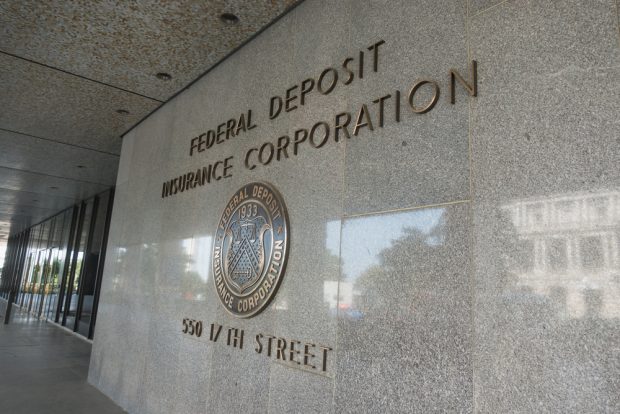 U.S. Post Office, Stillwater, Minn.
U.S. Post Office, Stillwater, Minn.
How do you provide access to financial services for millions of unbanked people?
By allowing post offices to become banks, of course.
Recommended For You
Every couple of years, the idea of postal service banking bubbles up to the surface as a way to provide banking services to those people without easy access to financial services.
And when it's proposed, credit union trade groups ask: Why do you need to put banks in post offices, when we'd be wiling to provide those services if Congress just allowed us to?
This year, Sen. Kirsten Gillibrand (D-N.Y.) has introduced legislation that would establish a retail bank in every post office.
"For millions of families who have no access or limited access to a traditional bank, the simple act of cashing a paycheck or taking out a small loan to fix a car or pay the gas bill can end up costing thousands of dollars in interest and fees that are nearly impossible to pay off," Gillibrand said, as she introduced S. 2755 on April 26.
The bill would provide consumer banking services, in particular small-dollar loans to post office customers, in an effort to end predatory loans offered by payday lenders.
"Millions of Americans are being forced into payday lending schemes that only exacerbate their money problems, and Congress has the ability to wipe out these predatory practices right now by creating a Postal Bank that would be accessible to everyone, everywhere," Gillibrand said.
Gillibrand's legislation would establish a retail bank in all of the Postal Service's 30,000 locations. The Postal Bank would be accessible to people of all income levels, but would particularly help those who have limited or no access to traditional banks, Gillibrand said.
In addition to small-dollar loans, the legislation would authorize the offering of low-cost checking accounts for direct deposits, check cashing and bill paying, small-dollar savings accounts, debit cards, low-fee cash machines, bill payments and remittance services.
Posting banking is not a new idea.
From 1911 to 1967, the Postal Savings Service gave consumers the opportunity to make savings deposits at certain post offices.
The system hit its peak in 1947, with nearly $3.4 billion in savings deposits at more than 8,100 postal units, according to the Postal Service's Office of Inspector General.
The system was shut down in 1967, following a long decline in usage.
A complicated plan to put banks in post offices isn't needed, CUNA Chief Advocacy Officer Ryan Donovan said.
"It's a solution in search of a problem," he said. "We don't need the government putting financial services in post offices."
There is a far simpler solution – expand federal law to allow credit unions to provide banking services to far more people. If Congress wants a greater number of unbanked people to have access to financial services, simply allow credit unions to offer the services, Donovan said.
CUNA President/CEO Jim Nussle has said that before the post service's mandate is expanded, "We strongly encourage Congress to explore how the Federal Credit Union Act and other banking laws constrain credit unions' ability to do more to serve the underserved, and work to expand consumer access to mainstream financial services through institutions established for that purpose."
NAFCU President/CEO B. Dan Berger agreed.
"While we appreciate Senator Gillibrand and her long record of supporting consumers, NAFCU opposes this concept, as credit unions already offer excellent loan and savings products for their members. Consumers are best served by institutions that can offer a full range of financial services and establish relationships with them, as credit unions do," he said.
But Gillibrand isn't alone in pushing the idea.
In 2014, the Postal Service's own Inspector General said the service could provide financial services if it partnered with already existing financial institutions.
"The Postal Service is well-positioned to provide non-bank financial services to those whose needs are not being met by the traditional financial sector," the Inspector General's office said.
"It could accomplish this largely by partnering with banks, who also could lend expertise as the Postal Service structures new offerings," the report continued.
Rather than competing with financial institutions, the Postal Service could endeavor to fill the gaps by providing services to those who currently aren't served by banks or credit unions.
"The Postal Service also is among the most trusted companies in America, and trust is a critical element for implementing financial services," the report said.
CUNA criticized the report, saying it lacked financial analyses of both the post office system and the financial institution system.
In 2016, Democrats included a plan for postal banking in their party platform, which was adopted at the Democratic National Convention.
Finally, a coalition of labor unions and consumer groups, known as the Campaign for Postal Banking, has been pushing the idea for several years. The campaign, which includes the labor unions representing many postal workers, contends that the Postal Service can increase and modernize its money order and international remittance authority under current law. Congress would not have to pass legislation for that.
Then, slowly, the Postal Service could seek regulatory and congressional approval to provide additional services.
But so far, neither Congress nor postal regulators seem ready to do that.
© Touchpoint Markets, All Rights Reserved. Request academic re-use from www.copyright.com. All other uses, submit a request to [email protected]. For more inforrmation visit Asset & Logo Licensing.






